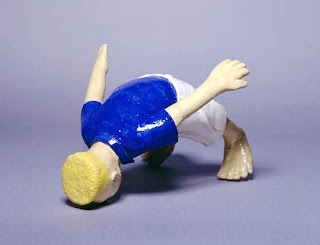Each New Year brings a lot of exciting opportunities and
challenges. The New Year gives us a marker of the passing time and mentally a
clean slate, tabula rasa.
The Hindu elephant God, Ganesh, the remover of obstacles and one who is called upon in the beginning of a new journey/experience. A mantra to invoke Ganesh: "om gam ganapataye namaha." Also happens to be one of this yogi's favorite of the Hindu God.
What are your 2014 resolutions?
So far, here are ChaCha’s 2014 goals:
1. Stop talking about yourself in the third person.
So, 2014 I encourage everyone to take the
time to pause and check in with what his
or her body really needs. Throw away the “chug” concept of imbibing water.
Frat boy water chugs were so 2013. Slow down. Sip and enjoy.
*And if you’re the type of eater who
forgets what they’re eating until five bites into the chomp (J.B. Harrison, I’m
talking to you), pump the breaks. Food and water are energy. Your body is made
up of energy. The way that you drink and eat other energies affects your
emotional, physical, and mental energy in a huge way.
4. Carve out the time to get back to my seated
meditation (pranayama). Five minutes
of meditation is better than no meditation at all. In a fast-moving environment
(like NYC) and culture (like the good ol’ USA), little credit is given to
moments of stillness.
I find movement meditation through yoga,
barre, and walking daily but having a committed seated meditation practice for
a few months, I know first-hand the potency of it.
A few moments of sitting consciously with
your breath and mind each day makes space for greater clarity. We would all be
a lot nicer to each other and ourselves if we took the time to check in with
ourselves each day.
How
do you instill this habit?
My mom always refers back to when I was sixteen
and announced to her that it takes three weeks to make a permanent change in
your life. That’s 21 days of sticking to a new habit that you want to enforce
in your routine.
Consider that I waited months for the new
season of Girls to come out (plug:
January 12th, season 3 begins), I think I can commit to a beneficial
life change for three weeks.
So, if practice isn’t about perfect, what’s
the point?
Practice is about our continual PROGRESSION
and EVOLUTION. And if you read those two words as me screaming them at you
because they’re in CAPS LOCK, know that it is an empowering scream to emphasize
their importance rather than a whiney angry scream. Life isn’t about the end
result, but rather the process (including the highs and the lows).
So, get on: your yoga mat, your Pilates’
mat, the barre, your walking shoes…are you picking up what I’m putting down? Find
your daily movement practice and/or practices and commit whole-heartedly to
them.
To quote my yoga teacher and dear friend,
Shiva Rea: "our movement is part of a greater movement."
Move your energy and transform each cell
within your mind and body. To quote yogi, Jessica Simpson (who may not know
that her lyrics encourage yogic lifestyle): “a little bit goes along way.”
I’ll leave you with a little inspiration
for resolution #5 to practice. I learned this movement sequence in an asana junkies
(yes, some of us just can’t get enough) practice with my amazing friend and
mentor, Mary Kate Murray.
*Note: this video was taken upon returning form a run in the park. Better practiced without sneakers.




























.jpg)













